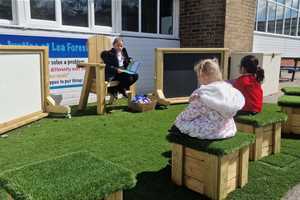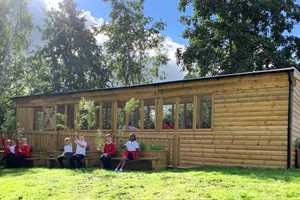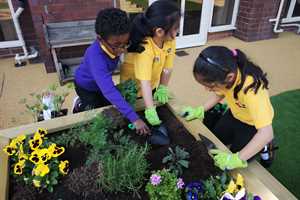
Outdoor Learning and Play
Who is Maria Montessori and What is the Meaning of Montessori Learning?
“Children are human beings to whom respect is due, superior to us by reason of their innocence and of the greater possibilities of their future.” - Maria Montessori
Dr. Maria Montessori an Italian physician, scientist, and anthropologist devoted her life to identifying how children progress socially, cognitively, physically, and emotionally.
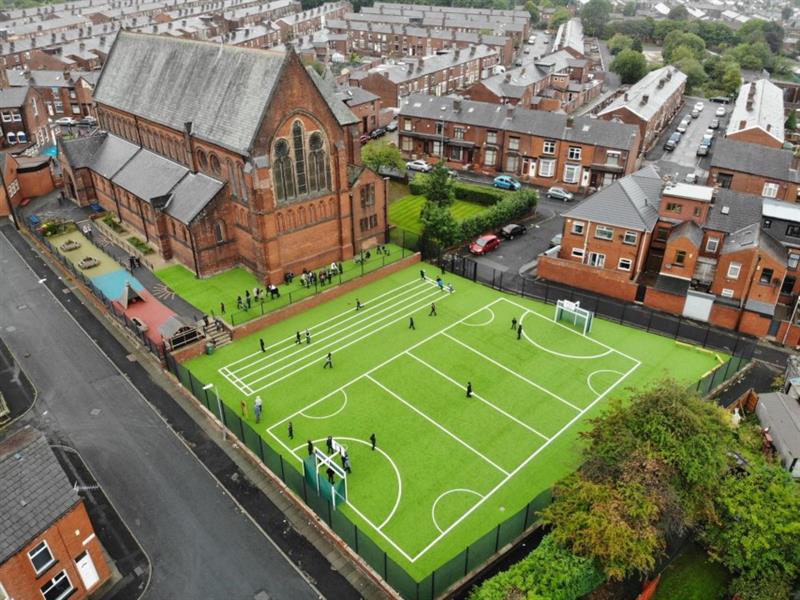
She founded her first Montessori school “Casa dei Bambini” in San Lorenzo, a poor, inner-city district of Rome, in January 1907 for disadvantaged and unschooled children.
Her work looked at the holistic approach to developing children’s emotional, social, physical, and cognitive capabilities through exploring the world around them whilst at the same time using their imagination.
.jpg)
Using her scientific studies and her understanding of working with young children, Dr. Montessori developed a unique child-led and hands-on, free play learning style for children that encourages children’s natural want to learn.
From there she held her first training course in Italy in 1913, led another course in America in 1915, and continued to carry on her vision all over the world.
She then founded the Association Montessori Internationale (AMI) in 1992 which is used worldwide to this day. All Montessori classroom environments are laid out to enhance children’s learning (birth to 18 years old) and encourage learning through age-appropriate free play activities by allowing children to make their own creative selections.
Children can work individually or in groups to explore and uncover different aspects of the world around them to reach their highest potential.
Dr. Montessori developed 5 Montessori Principles which are followed in every Montessori classroom:
- Children are shown respect,
- Children have absorbent minds,
- Sensitive periods are critical for learning,
- Children learn best in a prepared environment and,
- Children can teach themselves through auto education.
Let’s take a closer look at the benefits of Montessori play…
Children are shown respect
This first and underlying principle throughout any Montessori practices is that respect must be mutual between the child and their teacher(s).
With guidance from teachers, children can choose the activity they want to learn about and learn at their own pace, learning through play, whilst at the same time developing independence.
Allowing children to have freedom of choice of activities of interest, encourages and develops a lifetime love of learning.
Children have absorbent minds
This second principle looks at children learning about the world around them.
Children are like sponges and absorb everything. The first 6 years of any child’s life according to Montessori, is a crucial learning stage, especially for their linguistic skills, physical skills (fine motor), and an understanding of themselves and their environment.
Therefore, children should be encouraged to maximise their learning, at their own pace and through free play, within their first 6 years.
Sensitive periods are critical for learning
The most important learning milestones for all children are within their first 6 years.
Sensitive periods, therefore, are not based (in this context) on emotions, but on fundamental learning milestones and the children’s interests in developing that specific skill or knowledge base.
They are often categorised by mimicking, intense concentration, or repetitive or compulsive behaviour.
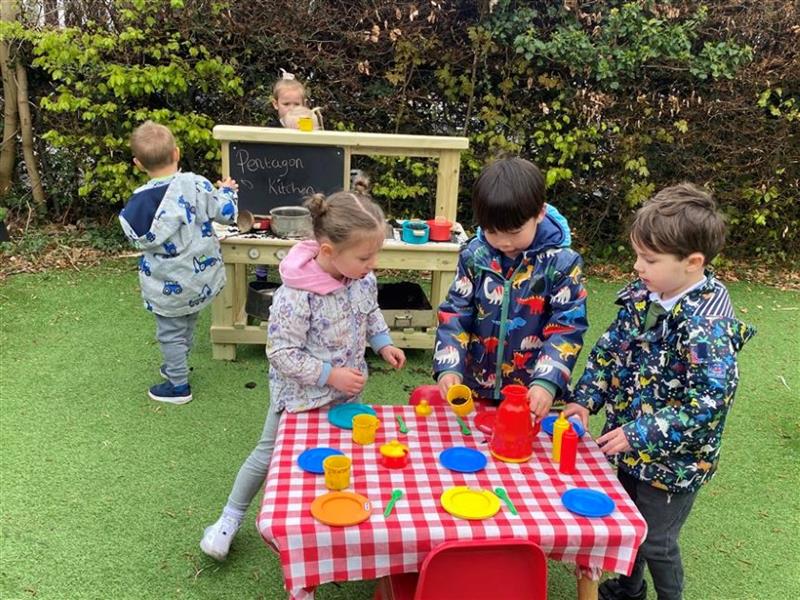
Montessori Theory states that there are 5 milestones that children experience within their first 6 years:
- Order:
From birth to 5 years where a child develops reasoning and organisational skills and an understanding of the world around them. This stage can be identified by children wanting repetition, routine, and structure.
- Language:
Where children develop their linguistic (7 months to 3 years), written (3.5 years to 4.5 years), and reading skills (4.5 years to 5.5 years). An environment with rich language will help children develop their language skills!
- Sensory Skills:
Starts from birth to 5 years and is when children use touch, taste, sight, and smell to refine their senses. A sensory-rich environment and learning through play activities will develop these skills through different smells, textures, and sights.
- Movement:
There are 2 stages in movement. The first is from birth to 2 years when children being to crawl, pull themselves up, and begin to walk. As well as developing their muscle strength and hand-eye coordination. The second stage from 2 years onwards is when children start to strengthen their grip and hold objects with 2 hands. A fun way of developing fine and gross motor skills is through outdoor play and in parks.
- Social Skills:
This stage starts at 2 years of age when children understand and begin to feel part of a group. Children will start to move towards different groups of people that interest them, starting new friendships and beginning to play with groups of children and adults. Children can be helped by their teachers by learning things like please and thank you to help social integration.
Children learn best in a prepared environment
Montessori classrooms are designed to optimise learning. Teachers layout and organise the classroom to encourage independent, free play learning.
They are designed to encourage child-led learning by allowing children to choose what they want to learn about by picking activities and materials that interest them.
Children can then pursue the Montessori play activity for however long they wish.
Montessori classrooms usually have low open shelves with resources such as blocks and manipulatives (manipulatives: resemble toys to attract children to play with them and are used to develop fine motor, matching, sorting, and other skills.)
Classrooms are easy to navigate with lots of materials and resources available for children to free play with.
The benefits of Montessori play is that through specially constructed activities and resources, children can work at their own speed to learn about different features of language, maths, science, music, the wider world, and arts and crafts.
By forming interests in these areas, children will replicate their chosen work and therefore show improved levels of concentration, coordination, physical development, confidence, and cognitive development.
Children can teach themselves through auto education
A key principle in the Montessori Method of learning.
Auto education (self-teaching) is the belief that children can learn and teach themselves independently of teachers. It is up to the teachers to provide the right learning environment to aid children’s autonomous activities and proactive learning.
.jpg)
As well as guiding, inspiring, and encouraging children to reach their full learning potential. It is important that teachers recognise children’s self-learning capabilities so that they can learn through Montessori play and grow to their full potential.
The idea of this learning environment is to allow children to make their own decisions, acquire knowledge and develop at their own pace. Whilst at the same time growing in confidence, autonomy, and self-worth to create the building blocks for a love of lifetime learning.
Pentagon Play’s Resources:
A great resource for any Montessori classroom would be Pentagon’s Breakout Space Package 1 in Wooden Effect, creating an ideal area for free play and flow, child-led learning.
Comprising of:
- Stack and Store Double Door Cupboards x 3
- Stack and Store Open shelving x 3
- Stack and Sit Stools x 4
- Stack and Sit Benches x 2
- Art Easel x 1
- Chalkboard Easel Board x 1
- Whiteboard Easel Board x 1
The low-level storage units are designed to allow children to self-select and therefore teachers can arrange the units and resources to encourage children to choose what activity they want to do. Having open shelving will provide access for children to explore and pick activities and materials that interest them. By having low open shelving teachers can stock them with blocks and manipulatives for the children to play and learn with.
.jpg)
The Stack and Sit Stools and Benches provide the perfect resource to sit, play and learn. Allowing children to remove the cushions if needed, to sit on the floor to pursue their activity, or use the interactive game tops of the stools/ benches to explore (featuring sorting tasks and small world diagrams.)
Both Stools and Benches can be used for storage, having window panels to identify materials within – perfect for free play, children can self-select from these as well to continue their play and learning growth.
.png)
The Easel can be stacked upon the seats for extra height, or the chalk/whiteboards can be placed on top of the Stack and Sit as interactive tabletops for children to use as part of their activities.
This versatile package will encourage free play, child-led learning which they can pursue for however long they desire.
If you're interested in learning more about how to optimise your classroom for Montessori learning, Contact Us Today.



.jpg)

